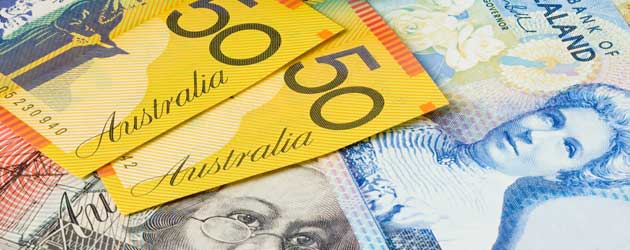
The Pound to Australian Dollar exchange rate (GBP/AUD) declined by around a cent from 1.8900 to 1.8800 and the Sterling to New Zealand Dollar exchange rate (GBP/NZD) fell by around -0.9 cents late last night in response to the Turkish Central Bank’s decision to raise interest rates by 425 basis points to 12.0%.
With emerging markets suffering from tremendous capital outflows over the past week in anticipation of this evening’s policy announcement from the Federal Reserve, the Turkish Central Bank took drastic measures in attempt to halt the exodus of cash.
The Turkish Lira sunk to an all-time low against Sterling on Monday morning, with GBP/TRY peaking at 3.3935. However, The Pound to Turkish Lira exchange rate plummeted all the way back down to 3.6180 in the aftermath of the 425 point rate increase.
The Turkish Central Bank’s decisive action gave traders the impetus to put their funds back into riskier assets, which subsequently benefitted both the ‘Kiwi’ and ‘Aussie’ Dollars versus the Pound.
The problem with emerging market economies, and risk-correlated assets in general, is that traders often bunch them all together when really it is better to analyse them on an individual basis.
Yes investors’ appetite for risk is correct to wane when Chinese PMI data prints negatively and yes risk-sensitive currencies are liable to depreciate when the Federal Reserve looks set to taper its QE3 stimulus programme. However, the extent to which some emerging market currencies have declined recently does not necessarily reflect accurately on the risks present.
For example: Argentina saw its currency, the Peso (ARS), tumble rapidly last week as the Argentine government announced that it would no longer be defending the domestic currency by limiting purchases of US Dollars. The move sent GBP/ARS up from 11.5180 to a fresh all-time high of 13.4425 and added to the mood of hysteria among traders of high-risk currencies.
Despite the fact that the Argentine economy has very little bearing on the Chilean economy, the Pound recently struck a 3-year high of 1.9132 against the Chilean Peso (CLP) as Chile was tarred with the same brush as Argentina. However, at 10.9% Argentina has one of the most worrying CPI inflation rates in the world, whereas Chile is running a fairly stable Consumer Price Index of 3.0%.
The unwavering Brazilian economy has suffered from a similar case of emerging market bracketing over the past few weeks, with the Brazilian Real (GBP/BRL) sinking to a 6-year low against the Pound. And, to a lesser extent, so have the Australian and New Zealand economies, with Chinese and US concerns softening demand for the ‘Aussie’ Dollar and the ‘Kiwi’.
It will be interesting to see how the Antipodean currencies react to this evening’s Fed announcement. A further tapering of asset purchases is expected, with the US Central Bank is likely to reduce the monthly number by -$10 billion to $65 billion. The most likely outcome is that the Australian Dollar will plunge but the New Zealand Dollar may escape unscathed because just a few hours after the Fed announcement the Reserve Bank of New Zealand is set to release its latest benchmark interest rate.
The RBNZ is expected to maintain the current rate of 2.50% but, with a hiking cycle on its agenda, the Central Bank could feasibly bolster demand for the ‘Kiwi’ Dollar by striking a hawkish tone.

Comments are closed.